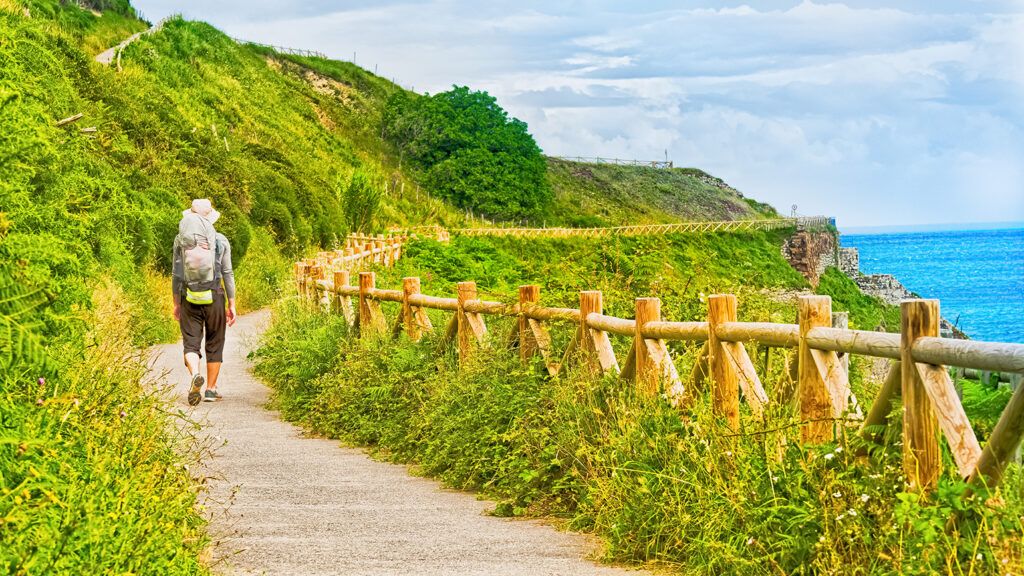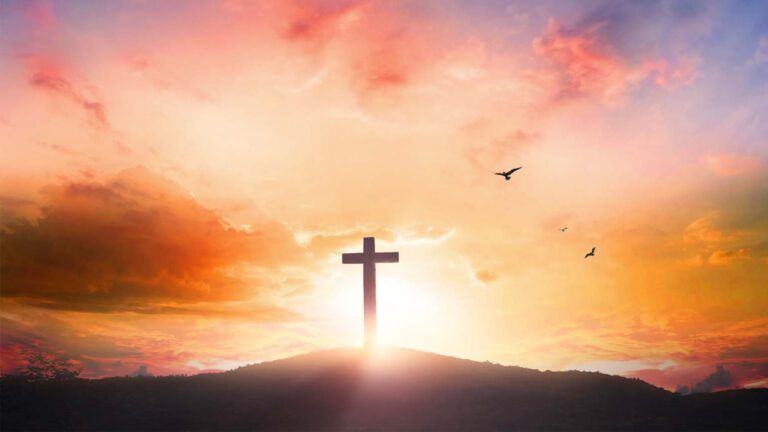Therese Borchard began walking The Camino de Santiago in May. She wrote this article before she left.
For many people El Camino represents a passage from pain to peace. The ancient pilgrimage is associated with miracles and self-transformation. In a few days, I will join the ranks of those who have walked before—Charlemagne, Saint Francis of Assisi and King Phillip II—to traverse this medieval path that spans 778 kilometers from the French town of Saint Jean Pied de Port across the Pyrenees to Santiago de Compostela, where the remains of Saint James the Apostle are held in the cathedral.
What Camino means to me
I became familiar with the pilgrimage my sophomore year in college when I spent a semester in Angers, France. The Way of St. James intrigued me then, but my coursework didn’t allow the time for such a long journey. I told myself I’d eventually get there. However, two decades went by and my passport expired.
A few months ago, when I heard the word Camino again, the timing seemed right. In every area of my life, I felt stuck: in my career, in my marriage and in my faith. My vitality had evaporated in my responsibilities as a mother, wife and full-time employee. I yearned for the days when I would feed the starving children in Calcutta alongside Mother Teresa or sing the words Ubi caritas et amor with thousands of believers in Prague. I was missing the zest that propels me out of bed in the morning.
As I prepared for the trip, the very word Camino began to represent my journey to self-empowerment. In anticipation of the walk, I worked more diligently with my therapist to open those parts of myself that had been closed off, to speak my truth and ask for what I need in all of my relationships and to chase my dream of inspiring others to health and wellness through writing and speaking.
The purpose of a pilgrimage
“We shall not cease from exploration and the end of all our exploring will be to arrive where we started and know the place for the first time,” writes T.S. Eliot in Four Quartets.
Such is the purpose of a pilgrimage.
The spiritual tradition started as journeys to the Holy Land made by people who wanted to visit the significant places along the Via Dolorosa, the Way of Sorrows, as a means of meditating on the pain and suffering of Jesus before his death. By the fourth century shrines were erected at these holy places, and pilgrimages to Jerusalem became popular as a devotional practice.
People make pilgrimages for different reasons. Some embark on a spiritual mission to grow in their faith, to seek penance for past “sins,” or to ask God for a special request. Others voyage to a significant destination as a kind of ascetic practice or voluntary exile from home, an experiment to see what happens to their soul without an iPad, Netflix and two pillows at night. Many pilgrims carve out a quiet space to commemorate a milestone in their life or as an exercise of self-examination.
As a college religion major, I studied the tradition of pilgrimage with fascination because it combined my two loves: faith and international travel. I made two pilgrimages my sophomore year while studying abroad in France. First, I traveled to Lourdes, France, where I witnessed hundreds of crutches hanging over the Grotto of Massabielle and bathed in the waters of the miraculous spring discovered by Saint Bernadette Soubirous in the 19th century. Later I journeyed to Lisieux, France, the birthplace of my patron saint, “The Little Flower,” and acquired a relic (the remains of a canonized saint). Just before graduation, I visited the Basilica of Our Lady of Guadalupe in Mexico City that holds the icon of Juan Diego’s cloak from an apparition of the Virgin Mary at Tepeyac Hill dating back to 1531. Each pilgrimage fed my soul in a way that a ski trip to the Alps couldn’t.
Although most of us connect the concept of a pilgrimage with an excursion to a geographically remote location, it can happen in your living room or in a minivan. The great mystics of Christian spirituality—Saint Bonaventure, Teresa of Avila and John of the Cross—wrote about interior ascents and descents within the soul. I will embark on my Camino pilgrimage shortly after the seeds of my adventure were planted. I’m hoping that my spiritual transformation will continue once I arrive at St. Jean.
A community of hope
It is said that each Camino pilgrim has a story. Some are grieving the loss of a family member. Others hope to reconcile with a spouse or find answers to a life dilemma. Seekers and explorers begin their steps at St. Jean mired in grief or addiction or disillusionment and reach Santiago empowered and restored. Although each narrative is unique, the pilgrims walk together as part of a community of hope.
I will join them, wearing the symbol of the scallop shell, associated with comradeship, spiritual direction and renewal. That is my hope for my pilgrimage—to arrive in Santiago a little lighter, with a clearer view of God’s grace in my life.






